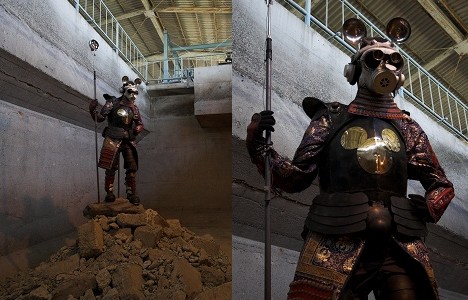
Mickey the Knight, a sculptural work by visionary neo-pop artist Yanobe Kenji, is a mouse-eared, gas-masked, fully-armored warrior who looks like a mutant samurai member of the Mickey Mouse Club.
According to Yanobe's notes, which were on display along with Mickey the Knight at a recent Yokosuka Museum of Art exhibit, he was invited to submit a Disney-themed piece for Disneyland's giant 50th anniversary celebration held in 2005. Known for work that explores issues like how to survive and have fun in post-apocalyptic settings, Yanobe drew inspiration from the legendary Mickey Mouse Gas Mask, an intriguing historical artifact whose background story reflects some of the themes found in Yanobe's work.
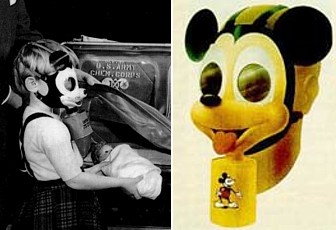 The Mickey Mouse Gas Mask was manufactured in 1942, at a time when segments of the American population, particularly those in Hawaii, feared a potential gas attack by the Japanese. With the permission of Walt Disney himself, 1,000 of the masks were produced for the US Army, who distributed them to civilians in the hope that the friendly, toy-like design would encourage children to carry them around and wear them for longer periods of time should an actual attack ever occur, thus improving their chances for survival. Apparently, this concept inspired Yanobe to create Mickey the Knight.
The Mickey Mouse Gas Mask was manufactured in 1942, at a time when segments of the American population, particularly those in Hawaii, feared a potential gas attack by the Japanese. With the permission of Walt Disney himself, 1,000 of the masks were produced for the US Army, who distributed them to civilians in the hope that the friendly, toy-like design would encourage children to carry them around and wear them for longer periods of time should an actual attack ever occur, thus improving their chances for survival. Apparently, this concept inspired Yanobe to create Mickey the Knight.
Unfortunately, however, Disney was not impressed with Yanobe's creation, and the big anniversary celebration passed without an invitation. Now, Mickey the Knight can be seen on occasion hanging out at museums and galleries. (The top photo shows Mickey the Knight at an installation in an old factory in Ibaraki prefecture, which was part of the Toride Art Project 2006.)

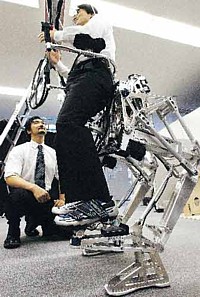 On June 15, electronics giant Matsushita Electric (Panasonic's parent company) unveiled a wearable robot suit called Power Pedal, which attaches to the lower body and provides users with up to seven times more leg strength.
On June 15, electronics giant Matsushita Electric (Panasonic's parent company) unveiled a wearable robot suit called Power Pedal, which attaches to the lower body and provides users with up to seven times more leg strength.
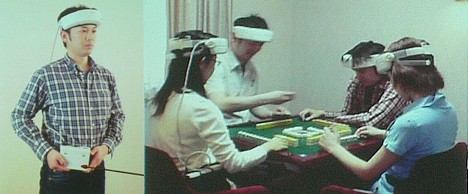
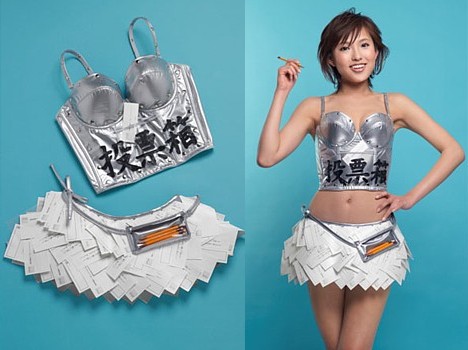
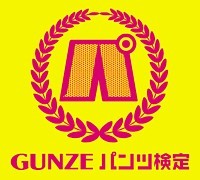 Japanese clothing manufacturer Gunze has announced the establishment of an underwear knowledge certification test called the Gunze Pantsu Kentei, which they will begin offering on March 1.
Japanese clothing manufacturer Gunze has announced the establishment of an underwear knowledge certification test called the Gunze Pantsu Kentei, which they will begin offering on March 1. 
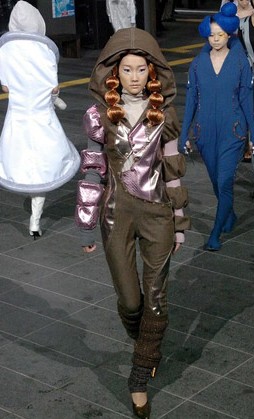 A spacewear fashion show featuring clothing designed for travel in weightless conditions was held at the University of Tokyo's Hongo campus on November 2.
A spacewear fashion show featuring clothing designed for travel in weightless conditions was held at the University of Tokyo's Hongo campus on November 2. 